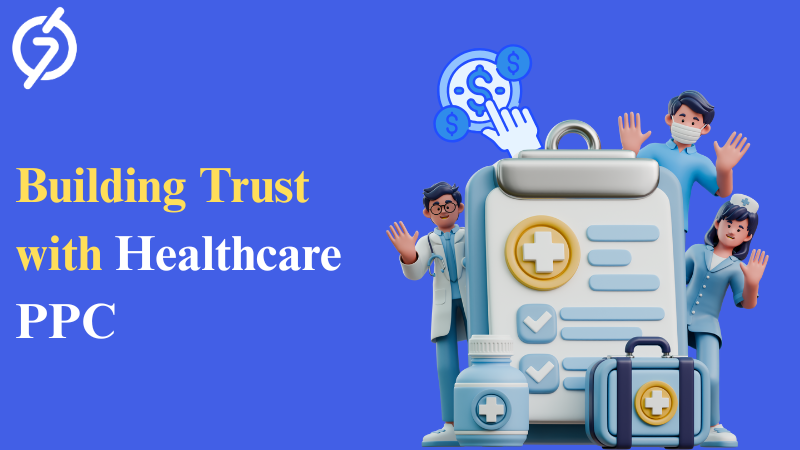-
Feed de Notícias
- EXPLORAR
-
Blogs
Healthcare PPC Advertising for Building Trust in New Markets

In today’s digital-first world, healthcare providers are not just competing on quality of treatment but also on visibility, credibility, and patient trust. As new markets emerge and expand, the ability to stand out requires not only strong clinical expertise but also smart digital strategies. This is where Healthcare PPC Advertising takes center stage as a powerful tool that helps brands establish trust while reaching the right audience.

Market Insight and Context
Healthcare advertising is going through one of the biggest transformations in history. Digital ad spend in the global healthcare sector was around $12 billion in 2020 and is expected to surpass $20 billion within the next few years. This dramatic growth shows just how much healthcare providers are relying on digital-first strategies. Yet, trust continues to be the cornerstone. A recent Deloitte study found that nearly 70% of patients only engage with providers who show both transparency and credibility in their online presence. Numbers and statistics alone are not enough—advertisers must focus on human trust factors.
Expanding into New Markets Without Trust
One of the biggest challenges healthcare advertisers face is entering a new market where no one knows them. A provider may be a trusted household name in one city but be completely unknown in another. Without word-of-mouth, established reputation, or local authority, they are just another name on the internet. Patients often hesitate to engage because they fear lack of credibility, hidden costs, or a lack of proven results. This lack of initial trust creates high bounce rates, wasted ad spend, and poor ROI in healthcare ad campaigns.
What Makes Healthcare PPC Unique
Unlike retail or travel ads where discounts or promotions can quickly drive clicks, healthcare decisions are more complex. Patients want signs of reliability, qualifications, and compassion. A bland ad with “Best Clinic Near You” may look like clickbait. But one that says “Trusted Pediatric Care — Serving 15,000 Families” feels reassuring. Healthcare advertising requires a blend of performance marketing and brand credibility. Every click is a potential patient making a decision that impacts their health. That is why advertisers must balance targeting efficiency with empathetic messaging.
Smarter Ad Approaches That Build Trust
Building trust in new markets does not require heavy spending but smarter strategies. Here are effective ways advertisers can strengthen their healthcare PPC advertising campaigns:
Localized Targeting for Instant Familiarity
Ads customized with location cues create an immediate sense of belonging. For example, “Leading Heart Specialist in Houston” feels more relevant than “Best Heart Specialist.” Localization is one of the fastest ways to connect with a new audience.
Adding Trust Signals to Ad Copy
Accreditations, certifications, awards, and patient numbers instill confidence. Phrases like “Accredited by National Health Board” or “Rated 4.9/5 by Patients” reassure users that the provider is authentic and trustworthy.
Educational and Value-Driven Ads
Patients are more likely to trust providers that help them learn. Ads that promote blogs, health FAQs, or guides such as “10 Signs of Early Diabetes” not only generate clicks but also strengthen authority. This makes PPC a credibility-building tool rather than just a lead driver.
Using a Health Advertising Network
Partnering with a healthcare ad network ensures placements across trusted websites and medical portals. This expands reach to relevant audiences who are already in a healthcare-seeking mindset.
Building Long-Term Trust with PPC Campaigns
Healthcare trust is not built overnight. PPC plays a crucial role in shaping the long-term perception of a brand. Some strategies that work effectively include:
- Transparent Calls to Action: Clear CTAs such as “Book Appointment Online” or “Get Free Consultation” avoid confusion and build confidence.
- Relevance: Ads must reflect real patient needs—orthopedics, pediatrics, telehealth, or mental health.
- Consistency: Aligning ad copy with landing page content creates a seamless user experience and builds credibility.
- Follow-through: Retargeting ads that repeat the same message increase familiarity and reinforce authority over time.
A Clinic Entering a New City
Consider a fertility clinic expanding from Chicago to Houston. In Chicago, they are well known, but in Houston they are starting from zero. By running PPC ads with localized keywords such as “Top Fertility Experts in Houston” and highlighting patient success rates, they began building trust. Ads linking to patient testimonials and educational guides further reassured prospective patients. Within six months, their campaign produced 3x higher appointment rates compared to generic display ads.
Practical Tips for Healthcare Advertisers
- Start with a limited budget to test different ad copies emphasizing credibility.
- Track meaningful conversions such as calls or booked appointments, not just clicks.
- Show transparency in pricing, accepted insurance, and patient support services.
- Use retargeting campaigns to re-engage hesitant patients.
- Leverage long-tail, intent-based keywords like “affordable orthopedic surgeon in Dallas.”
PPC vs Other Healthcare Advertising Models
PPC is often compared with display, native, or social ads. Each has strengths, but PPC holds a trust advantage:
- PPC: Targets active intent-driven searches. Higher trust and faster conversions.
- Display: Broad awareness, good for remarketing but weaker at driving initial trust.
- Native Ads: Effective for education and brand awareness but slower to convert.
- Social Ads: Great for engagement, but patient trust can vary depending on platform credibility.
Future of Healthcare PPC Advertising
The future is driven by AI, personalization, and compliance. Advertisers must adapt to patient privacy laws, HIPAA requirements, and search engine policies. AI-driven targeting will allow personalized healthcare PPC ads that adapt to user behavior without breaching privacy. Voice search optimization will also matter as patients increasingly ask devices for healthcare information. Those who adopt early will lead in new markets.
Ready to Move Forward?
Building patient trust in new markets requires consistent strategies. If you want to start strong and scale effectively, you can create an ad campaign that balances patient acquisition with trust-building for long-term success.
Closing Thoughts
At the end of the day, healthcare is not just another industry—it is about people making life-changing decisions. As advertisers, our role is not only to drive conversions but to build lasting trust. Healthcare PPC Advertising is more than a marketing tactic; it is a bridge between providers and patients seeking confidence in their choices.
If you are entering a new market, remember this: visibility gets you seen, but credibility gets you chosen. Patients pick providers who speak clearly, honestly, and with empathy. So, when planning your next campaign, ask yourself—not just how many clicks you want, but how much trust you are building along the way.
So, what is your next move?






